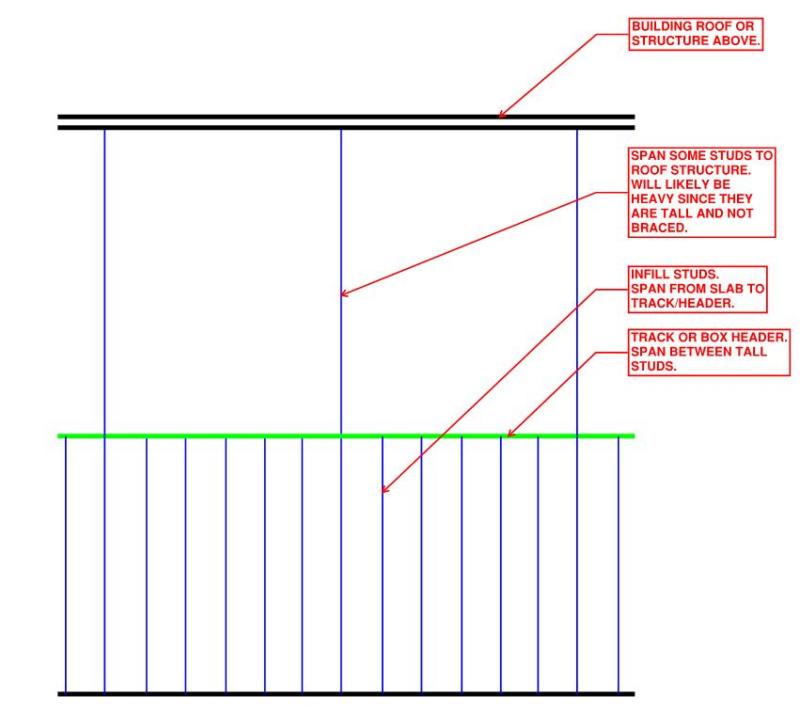oengineer
Structural
- Apr 25, 2011
- 731
I have a question regarding stud wall bracing.
I have 12’ high metal stud walls for a building renovation for an indoor Volleyball court. There is no ceiling, the stud walls are partitions and open above to the 24’ plus roof height. Stud walls usually have diagonal bracing at the top to keep them supported laterally and this is usually concealed by a drop ceiling.
The client doesn’t want to see diagonal bracing all over the place going up to 24’ or 30’ high in some places. This would not look good.
Would anyone happen to have any suggestions on how I can specify the walls to have internal x’bracing or something to make them structurally sound from falling over without using diagonal braced studs from the top track of the partitions all the way up to the roof deck?
Any comments/suggestion are appreciated.
I have 12’ high metal stud walls for a building renovation for an indoor Volleyball court. There is no ceiling, the stud walls are partitions and open above to the 24’ plus roof height. Stud walls usually have diagonal bracing at the top to keep them supported laterally and this is usually concealed by a drop ceiling.
The client doesn’t want to see diagonal bracing all over the place going up to 24’ or 30’ high in some places. This would not look good.
Would anyone happen to have any suggestions on how I can specify the walls to have internal x’bracing or something to make them structurally sound from falling over without using diagonal braced studs from the top track of the partitions all the way up to the roof deck?
Any comments/suggestion are appreciated.


